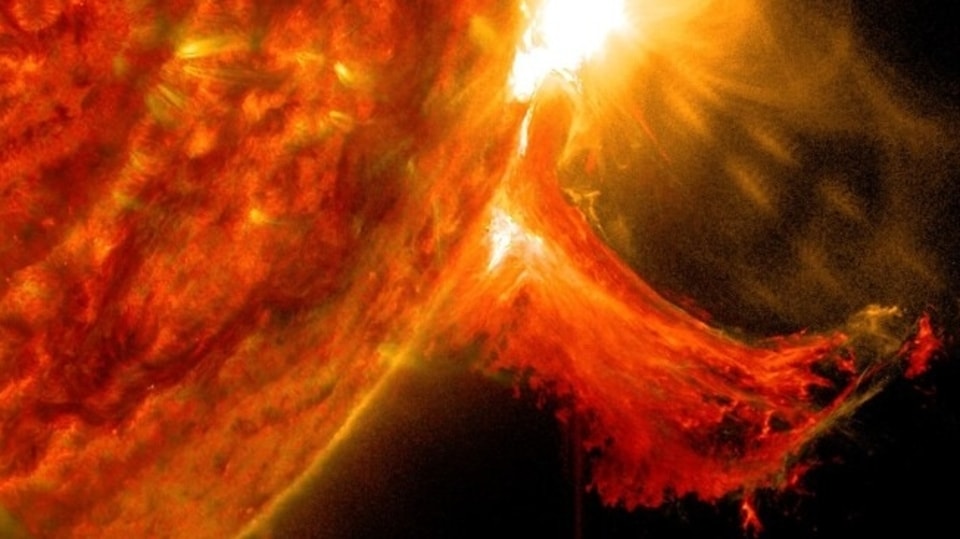A second TERRIFYING sunspot emerges on Sun; Solar storm fear doubles for Earth
Astronomers have spotted a second giant sunspot emerging on the Sun. This one has arrived after a particularly unstable sunspot blasted solar flares over the last few days. So, are solar storm troubles increasing for Earth?






 View all Images
View all ImagesRight now, the Sun is showing signs of being extremely active. On February 7, the Earth suffered a solar storm attack and a separate solar flare eruption that caused radio blackout in the pacific region. The sunspot responsible for this eruption, AR3213, is still sitting on the Earth-facing solar disk and there is a possibility of further solar disturbances coming from it. But worryingly, another sunspot has emerged on the Sun and it will soon be joining the former. This particular sunspot is also an unstable one. On February 7, a farside explosion was detected which is being associated with this sunspot. With both of these appearing at the same time increases the chances of a severe solar storm event on Earth.
The development was reported by SpaceWeather.com which noted on its website, “A new and apparently large sunspot is emerging over the sun's southeastern limb…This is the same active region that produced a dramatic explosion from the farside of the sun on Feb. 7th”. This is concerning both due to the size of the sunspot and the fact that it has already exploded once.
Double sunspot attack on Earth
There are two factors that govern whether a sunspot can explode and send solar storms towards the Earth or not. The first is the size of the sunspot. The larger a sunspot, the higher magnetic flux it contains within itself. This region conflicts with the rest of the Sun's surface and its normal magnetic field lines. As the conflict increases, the pressure within the sunspot builds up and it explodes. However, not all large sunspots explode.
This brings us to the second factor which is how concentrated the magnetic flux within a sunspot is. The darker a sunspot appears on the Sun, the higher the chances for explosion. Darker sunspots also have a considerably lower temperature which lead to frequent eruptions so the convection of heat can continue.
Scarily, these two sunspots fulfill both these criterias and that's why there is a chance that a severe solar storm can strike the Earth. An extreme solar storm event (G5-class) can cause major damage to our planet. The resultant solar storm could be equivalent to the Carrington event of 1859 which is the largest recorded solar storm on Earth. A solar storm like that today can be quite terrifying. It can disrupt GPS, hamper mobile networks and the internet and even cause a massive power outage by corrupting the power grids. Even the electronic devices on Earth are not safe from malfunctioning.
Catch all the Latest Tech News, Mobile News, Laptop News, Gaming news, Wearables News , How To News, also keep up with us on Whatsapp channel,Twitter, Facebook, Google News, and Instagram. For our latest videos, subscribe to our YouTube channel.
































